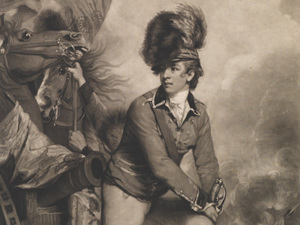- Events & Programs Home
- Calendar
- Accessibility
- Adults
-
Families & Teens
- Families & Teens Home
- 10x10 Teen Art Expo
- Art on the Rise
- Art Together: Art Making for Families with Children Ages 3–5
- Babies Sing with May Festival Minis
- Boy Scouts / Girl Scouts
- CAM Kids Day
- Family Storytime and Gallery Walk
- Family Studio: Art Making for Families with Children Ages 6–12
- Games in the Galleries
- Members-Only Baby Tours
- Public Baby Tours
- REC Reads
- Rosenthal Education Center (REC)
- Saturday Morning Art Class
- See Play Learn Kits
- Summer Camp
- Teen Fest: Zine and Comic Exchange
- RECreate
- Teachers
- Community Outreach
- Fundraisers
- Plan Your Own Event

- Events & Programs Home
- Calendar
- Accessibility
- Adults
-
Families & Teens
- Families & Teens Home
- 10x10 Teen Art Expo
- Art on the Rise
- Art Together: Art Making for Families with Children Ages 3–5
- Babies Sing with May Festival Minis
- Boy Scouts / Girl Scouts
- CAM Kids Day
- Family Storytime and Gallery Walk
- Family Studio: Art Making for Families with Children Ages 6–12
- Games in the Galleries
- Members-Only Baby Tours
- Public Baby Tours
- REC Reads
- Rosenthal Education Center (REC)
- Saturday Morning Art Class
- See Play Learn Kits
- Summer Camp
- Teen Fest: Zine and Comic Exchange
- RECreate
- Teachers
- Community Outreach
- Fundraisers
- Plan Your Own Event
Darkness Into Light: Mezzotint Rediscovered
Darkness Into Light: Mezzotint Rediscovered
- Home
- Plan Your Visit
- Art
-
Events & Programs
- Events & Programs Home
- Calendar
- Accessibility
- Adults
-
Families & Teens
- Families & Teens Home
- 10x10 Teen Art Expo
- Art on the Rise
- Art Together: Art Making for Families with Children Ages 3–5
- Babies Sing with May Festival Minis
- Boy Scouts / Girl Scouts
- CAM Kids Day
- Family Storytime and Gallery Walk
- Family Studio: Art Making for Families with Children Ages 6–12
- Games in the Galleries
- Members-Only Baby Tours
- Public Baby Tours
- REC Reads
- Rosenthal Education Center (REC)
- Saturday Morning Art Class
- See Play Learn Kits
- Summer Camp
- Teen Fest: Zine and Comic Exchange
- RECreate
- Teachers
- Community Outreach
- Fundraisers
- Plan Your Own Event
- Give & Join
- About
- Tickets
- Calendar
- Exhibitions
- Collections
- Blog
- Shop
- Art
- Exhibitions
- What, Me Worry? The Art and Humor of MAD Magazine
- Recall. Reframe. Respond. The Art of Paul Scott
- Rediscovered Treasures
- Special Features
- Upcoming Exhibitions
- Past Exhibitions
- Online Exhibitions
- Explore the Collection
- Provenance and Cultural Property
- Conservation
- Meet the Curators
- Digital Resources
- Art Bridges Cohort Program
Darkness Into Light: Mezzotint Rediscovered
September 24, 2011 - December 05, 2011
 Seventeenth century Dutch painters and printmakers sought to depict chiaroscuro and convey atmospheric depth. Although a variety of relief and intaglio techniques existed, a nonlinear graphic process that could translate painting’s tonal values and surface textures had eluded artists, engravers and publishers. In 1642, an amateur, Ludwig van Siegen of Utrecht, discovered a new technique, mezzotint, where the artist works from dark to light. Drawn from the Cincinnati Art Museum’s permanent collection this show presents landmarks in the history of mezzotint from 1642 through its heyday as a reproductive medium in eighteenth century portraiture in England, and on through the creative use of the medium today.
Seventeenth century Dutch painters and printmakers sought to depict chiaroscuro and convey atmospheric depth. Although a variety of relief and intaglio techniques existed, a nonlinear graphic process that could translate painting’s tonal values and surface textures had eluded artists, engravers and publishers. In 1642, an amateur, Ludwig van Siegen of Utrecht, discovered a new technique, mezzotint, where the artist works from dark to light. Drawn from the Cincinnati Art Museum’s permanent collection this show presents landmarks in the history of mezzotint from 1642 through its heyday as a reproductive medium in eighteenth century portraiture in England, and on through the creative use of the medium today.
Image: John Raphael Smith (English, b.1752, d.1812), after Sir Joshua Reynolds (English, b.1723, d.1792); Lieutenant Colonel Sir Banastre Tarleton (detail), 1782, mezzotint on antique laid paper,1st state, Bequest of Herbert Greer French, 1943.481
Cincinnati, OH 45202
Toll Free: 1 (877) 472-4226
Museum Hours
Museum Shop
Terrace Café
Library
Cincinnati Art Museum is supported by the tens of thousands of people who give generously to the annual ArtsWave Campaign, the region's primary source for arts funding.

Free general admission to the Cincinnati Art Museum is made possible by a gift from the Rosenthal Family Foundation. Exhibition pricing may vary. Parking at the Cincinnati Art Museum is free.
Generous support for our extended Thursday hours is provided by Art Bridges Foundation’s Access for All program.

General operating support provided by:



